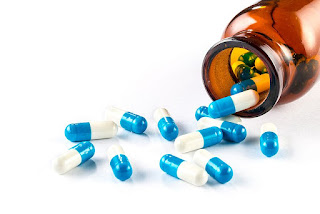Cleanroom Consumables: Ensuring Quality Production in Controlled Environment
Cleanroom consumables play a vital role in maintaining sterility and preventing contamination in cleanroom environments where highly sensitive products like pharmaceuticals, medical devices and microelectronics are manufactured. From wipes and gowns to bags and boxes, cleanroom consumables are single-use items designed to meet stringent industry standards for particle counts and biological burden.
Garbing and Gloves
The first line of defense against contamination is provided by gloves and
protective garments worn by operators inside cleanrooms. Sterile gowns, hair
covers, face masks and booties keep secondary particles from shed human skin
and hair from entering the work area. Nitrile, vinyl and latex gloves come in a
variety of lengths, thicknesses and textures to suit different tasks. Some
gloves even have textured surfaces or finger cots for improved grip. Regular
audits ensure garbing solutions used conform to quality norms.
Wipes and Disinfectants
A variety of wipes are used extensively for cleaning surfaces, equipment
and tools inside cleanrooms. Disinfectant wipes containing isopropyl or ethyl
alcohol are popular for disinfecting workstations between batches. Specialized
wipes made of non-woven fabrics help remove particles and leave no residue.
Antistatic wipes prevent electrostatic discharge during electronics work. Wipes
are available pre-moistened or dry for use with compatible cleanroom
disinfectants and solvents. Proper wipe disposal in sealed bags reduces
secondary waste.
Barrier Films and Fabrics
Lightweight films and non-woven fabrics form an effective yet economical
barrier against contamination during manufacture, packing and transportation of
sterile products. Medical-grade paper, laminates, breathable
spunbond-meltblown-spunbond composites and Tyvek provide budget-friendly
protection. Self-sealing pouches and sterile reels keep components dust-free
prior to assembly. Custom-sized barrier drapes shroud machinery during
maintenance, supporting compliance.
Packaging and Transport
A range of validated cleanroom
Consumables packaging like bags, boxes, bottles, cansisters and
containers ensure sterile products reach the customer without compromising
purity. Materials like plastic, foil laminate and spunbond offer strength as
well as barrier properties. Tamper-evident seals, labels and closure types like
press-to-close lids lock sterility within. RFID tags allow traceability through
distribution channels. Specialty corrugate and isothermal shippers maintain
temperature-controlled transport of sensitive drugs and samples.
Monitoring and Quality Control
Stringent quality benchmarks define critical parameters for garment and
environmental quality to support regulations. Viable particle counts, bioburden
testing and endotoxin screens verify the biosafety offered by consumables used
in sterile production areas. Ongoing supplier assessments ensure consistency in
materials and manufacturing processes. On-site particle sampling further
mitigates contamination risk by validating that work area and cleanroom garment
ISO values support product purity as defined in regulated documents like device
master files.
Judicious selection and use of appropriate cleanroom consumables produces
assured sterility for healthcare products. By supporting environmental
protection through effective barriers, careful surface preparation techniques
and validated containment during manufacture and transport, consumables
complement cleanroom design and operations to deliver the highest purity
expected in critical environments. As technologies evolve, continued innovation
in cleanroom consumables will remain integral to maintaining purity standards
that patient safety demands.
Get
more insights on this topic: https://www.ukwebwire.com/cleanroom-consumables-enabling-precision-and-purity-in-critical-environments/




Comments
Post a Comment